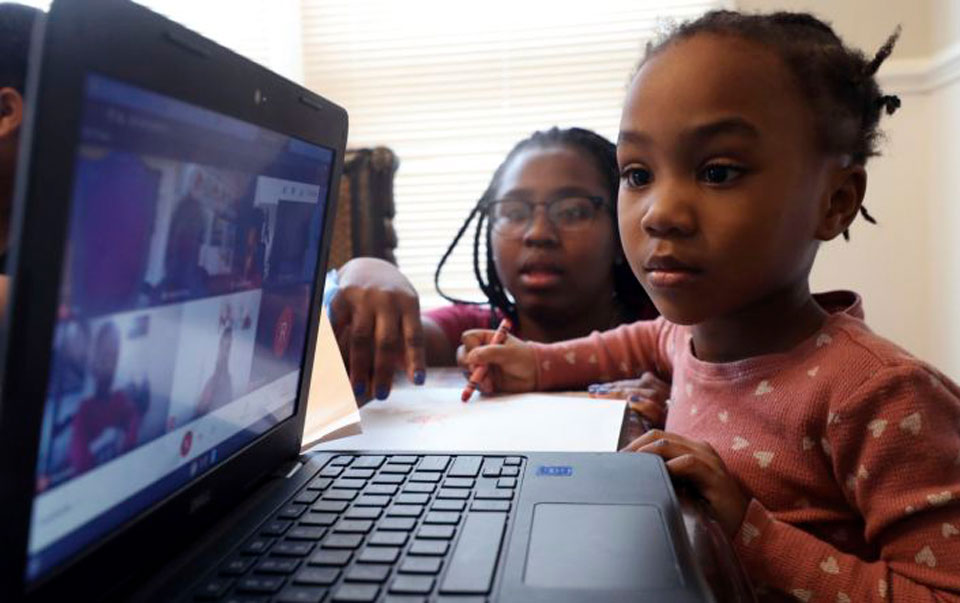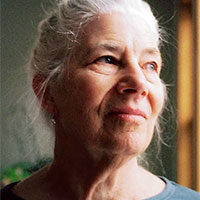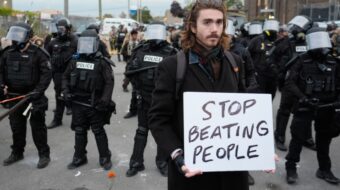
CHICAGO – Some school children here will be returning to classrooms next week after nearly one year away from their teachers and classmates as a result of the coronavirus pandemic. By a 2-to-1 vote, Chicago Teachers Union members accepted the school board’s re-opening proposal in results announced Feb. 10. The vote among CTU’s 25,637 members was 13,681-6,585.
The Chicago vote highlights continuing controversy, especially in large urban school systems, over the fate of in-classroom teaching during the coronavirus pandemic. Other school systems where teachers have challenged politicians over whether and when to come back to school include Miami, Houston, Philadelphia, and San Francisco.
The Chicago dispute pitted the Teachers Union against the city’s school board, Mayor Lori Lightfoot, and the head of the Chicago Public Schools Janice Jackson. Citing deep concern for teachers’ health, that of children, other staff, and the families of all of them, CTU leaders had argued vehemently against returning to classrooms, that the district’s plan didn’t go far enough in protecting teachers’ and children’s health.
In countering, CPS raised urgent concerns about on-going harm suffered by children during prolonged isolation from learning and social services and insisted that studies show that with proper measures school openings would not endanger staff and students.
Several factors are at the root of the impossible quandary: First, an out-of-control pandemic – still raging after a year due to reckless leadership by the Trump administration; second, the intensification of that crisis by the undermining of confidence in science and public institutions; third, the nation’s ragged or non-existent public health system; and fourth, lack of trust borne of a long history of corruption and educational malpractice in the nation’s third-largest school system.
Teachers were already in a somber mood this week at the sad news of the death of Karen Lewis, the beloved former president of the union who led a rank and file upsurge and militant strikes with broad community support before stepping down in 2014 after a devastating diagnosis of brain cancer.
Fear and pain everywhere
“There’s fear and pain everywhere,” said AFT President Randi Weingarten in a Feb. 5 interview with NPR, “The lion’s share of teachers are parents as well. … They’re scared for our kids, they’re scared for themselves. And that’s why we’re working double and triple time, and have been for months, to get the resources, to get the safeguards, and to get a consistent message from government about what is needed.”
The Chicago plan phases in the reopening. Special education and pre-K teachers and students have started the first stage this week. Students in K-5 can return March 1, and students in grades 6-8 can come back March 8.
The school district is not pressuring families to return. Only a third have opted in for this round but more are expected when the option re-opens in April. This gives schools a chance to gradually ramp up programs.
The K-8 children will be in classrooms two days a week. But first, teachers will come back a week early to get classrooms ready and to become familiar with new technology. Teaching in-person and remote students simultaneously will be a challenge. Wide-angle cameras and powerful mikes, installed in every classroom, mean that instructors are no longer tethered to their laptop cameras. At-home learners will be able to see and hear the teacher, the smart board, and their fellow students. In cases where teachers have been issued a dispensation from in-person work due to preexisting health conditions, assistants have been hired to work in the classroom while teachers work from home.
All learning will be remote on Wednesdays as schools are cleaned.
No return date was given for high school students, who would continue remote learning until further notice.
Significant concessions
A protracted campaign by the Chicago Teachers Union resulted in significant concessions by the City. Two thousand pre-K and cluster (special ed) staff and those staff who were not granted an accommodation but who have medically vulnerable household members are being offered vaccinations this week.
Staff who live or work in the city’s 15 most impacted and vulnerable communities may also be offered vaccinations through the city’s Protect Chicago Plus initiative. Special sites dedicated to providing CPS school staff will administer 1,500 vaccinations every week. Teachers fall within the state’s 1B vaccine eligibility group, but the state’s, and especially the city’s, vaccine supply fall far short of being able to take care of this group along with other essential workers and the over-65 population that are included in the 1B group.

The agreement also includes metrics that would trigger school closings if cases spike. The agreement includes accommodations for teachers with pre-existing conditions and those in households with medically vulnerable people.
A key component is intensive testing. School staffs will be tested every 2 weeks and a contact-tracing team of 10 is in place to follow up.
The union and district had been fighting for months over a plan to gradually reopen the roughly 340,000-student district, with talks repeatedly breaking down. Lightfoot and CPS officials had threatened to lock educators out of teaching systems multiple times, which the union said would lead to a strike for the second time in less than two years.
CPS officials have said it is possible to open schools safely if proper measures are taken and that remote learning isn’t working for all students, including many Black and Latino students who make up the majority of the district. The head of the School Board Miguel Del Valle said it was urgent to provide more support to students who haven’t been well-served remotely, including a path toward more opportunities for in-person learning.
Melissa Parks, an editorial assistant at People’s World, has two students in CPS. Her decision to send her 15-year old granddaughter back to the classroom did not come easily. Before the pandemic hit last year, Jazzmyne enrolled in Northside Learning Center High School, a Chicago Public School educating students with significant intellectual disabilities and impaired adaptive functioning.
Jazzmyne was flourishing in the school which focuses on teaching “real life and vocational skills in an authentic setting” for students like her with autism. These programs don’t translate to online learning, according to Parks. “She wasn’t getting any learning for a year,” the grandmother told People’s World. “She couldn’t stay in her seat without constant supervision every minute,” even to pay attention to the videos her teachers carefully prepared about how to do life activities. Jazzy’s younger sister Serenity was also impacted. She valiantly tried to help oversee Jazzmyne’s attendance often distracting her from her own remote classroom.
“Yay!” Serenity, a bright and bubbly 9-year old told People’s World in reaction to news that she too can return to the classroom March 1. Besides seeing her friends in person – nowadays the only one who always has their camera on is the teacher, she reports – Serenity’s biggest relief will be not having to deal with technical issues. “On the computer, you have bad connections, and when you come back you missed things, but when you’re in school you can just hear what the teacher says.” Reading is the hardest to learn, she reports. “The computer keeps freezing up.” Parks is a member of the Local School Council and Serenity is a 3rd grader at McClellan Elementary school, around the corner from the People’s World editorial office.
Melissa Parks felt more at ease with Jazzymyn’s situation after a Zoom meeting with the school’s teachers and administrators. She said she already had a good rapport with them. “They showed how the classrooms would be set up, they were ready and prepared if a student got sick with a special ‘care’ room. They had PPE, HEPA filters. It looked to me like they were prepared for the students to come back.”
In another part of town, the vice principal at a southside middle school described the re-opening preparations there. He described beefed up staffing: each school with a designated “care room” and a dedicated attendant for kids who get sick during the school day until they can be picked up by parents. Four additional substitute teachers have been added to the full-time staff to cover classrooms where teachers have telework accommodations in addition to two “miscellaneous” aides, and an extra custodian, to enable bathrooms to be cleaned continuously throughout the day. “We will be urging parents to send kids warmly dressed. These windows will be opened,” he said. The plan limits classrooms to 15 people total, but the VP noted that because less than a third of families are opting for in-person instruction, the average number of people in each classroom will be in the 6 to 7 range. Each room has a HEPA filter. All staff are to be tested with rapid tests biweekly.
The south side vice-principal welcomed the re-opening even in the face of logistical challenges. “All educators are really worried about the depression, isolation, anxiety, and virtual addiction to electronics we have seen.” He expressed a particular concern with the number of children home unsupervised. Back in school, children will again be in contact with the school’s social worker and counselor.
Some union leaders agree with Melissa Parks’ assessment of remote learning. In a Jan. 24 opinion piece in USA Today co-authored with Dr. Rajiv J. Shah, AFT President Weingarten maintains: “Remote learning is not a substitute for in-school instruction: Up to 30% of students lack reliable Internet access in this country. As a result, too many elementary and middle school students are falling behind; absences are up and academic performance is down. Even worse than the impact on learning, without a school’s support and services, more children are going hungry, are socially isolated, and are suffering abuse or neglect at home. With each week out of school, the social and emotional costs increase, especially for low-income and minority kids.”
The CDC found that from April to October 2020, hospitals across the country saw a 24% increase in the proportion of mental health emergency visits for kids ages 5 to 11.
Great fear out there
Weingarten argues that it is possible to have schools open, even before full vaccination is possible, but notes that there is great fear out there. In the interview with NPR, she says that getting teachers comfortable with heading back to schools will rely not just on the science, but also on rebuilding trust between teachers and local governments.” “New York has done that. We’re starting to have phased reopenings in Boston,” she says. “We have to have examples that can be lifted up because, frankly, people need to trust that elected officials are going to have their best interest in mind.” With Chicago’s bitter history, going back to corporate-oriented administrators Arne Duncan, Rahm Emanuel, and Richard Daley, building that trust might be particularly challenging.
Weingarten placed particular emphasis on testing. In the opinion piece in USA Today she argues:
“First, COVID-19 testing must become a way of life in schools: We need to test regularly and rapidly. Testing is an early warning system, particularly for a virus that transmits asymptomatically. Even after effective and safe vaccines become more widely available, regular testing is going to be needed to avoid outbreaks and protect children, and their families, because children do not yet have a vaccine approved for use. Based on what we’re seeing, a risk-based protocol could involve testing as frequently as twice a week for teachers and staff, and once a week for students.”
The protections for staff and students in the Chicago agreement appear to correspond with many proposals contained in a Plan to Safely Reopen America’s Schools and Communities issued last month by the American Federation of Teachers. Perhaps the biggest piece Chicago political leaders missed from those recommendations is the critical necessity for full involvement of workers, unions, parents, and communities in all planning.
Weingarten makes it clear in the NPR interview why this is important: “Data alone is not enough to convince parents, educators or students that they’ll be safe in schools,” as a result of “the past year’s absence of federal leadership on this issue and pervasive mistrust of science in many U.S. communities.”
AP contributed to this story.











